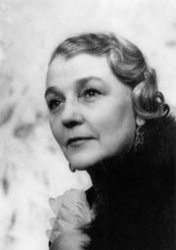 I recently had the opportunity to interview Ms. Maria Ignacia Arcaya, VP and Executive Director of Corporate Social Responsibility at Cisneros. She is behind the initiative to promote the elimination of violence again women and girls in Cisneros’ campaign #LasMujeresNoCallamos. I hope you find this as an important cause as I have.
I recently had the opportunity to interview Ms. Maria Ignacia Arcaya, VP and Executive Director of Corporate Social Responsibility at Cisneros. She is behind the initiative to promote the elimination of violence again women and girls in Cisneros’ campaign #LasMujeresNoCallamos. I hope you find this as an important cause as I have.
KIDS FIRST! Can you please share with our KIDS FIRST! readers some of your responsibilities at Cisneros?
Ms. Arcaya: My role at Cisneros consists primarily of working hand-in-hand with upper management to identify opportunities to create social value through our business units. An important part of this process includes developing social impact goals, implementing plans and establishing strategic partnerships to optimize efforts.
KIDS FIRST! You are behind the initiative to promote the elimination of violence against women and girls in Cisneros’ brilliant campaign #LasMujeresNoCallamos. Can you please tell our readers more about this campaign?
Ms. Arcaya: The main purpose of this campaign is to raise awareness regarding the different types of behavior patterns in a relationship that are manifestations of violence and that should not be accepted or tolerated. Through their testimonies, women of all ages point out their partner’s actions or attitudes towards them, initially justifying their behaviors, such as extreme jealousy or control, as manifestations of love, and then realizing that these are not acceptable and standing up to demand their rights to live a life free of violence. Each spot shows various levels of violence, which escalate from verbal or psychological abuse to death threats, and ends with a call to action.
KIDS FIRST! What’s the backstory here? What led you to initiate this campaign?
Ms. Arcaya: Cisneros Media, the corporate division that encompasses all of the Cisneros’ media and entertainment companies, set out to develop a core CSR initiative that was transferable to all its communications platforms, identified women’s rights in general as a cause that both our businesses and audiences could relate to, and would have the greatest impact. We believe that men and women have the same rights to enjoy a productive and satisfactory life. Living without violence and free of fear are equal rights for all, and we believe that as a media company, it is our responsibility to contribute to this objective. And to ensure that our messages were aligned with international efforts and strategies, we partnered with UN Women – the United Nations organization dedicated to gender equality and the empowerment of women.
KIDS FIRST! I believe everyone knows a female that has been physically abused by either their partner, family member or a complete stranger. What is the outcome you hope this campaign accomplishes?
Ms. Arcaya: We hope that women of all ages will become more aware of the different characteristics of an abusive relationship to enable them to identify them and seek help. We also aim at motivating everyone, both men and women, to join us in our efforts to spread the message that all women and girls have the right to a life without violence. Our campaign has a strong social media component as key messages have been communicated through our social media accounts, reaching millions of people who in turn have shared them with others.
KIDS FIRST! This violence against women is a cruel act on females. It doesn’t matter what is your economic status, your age, your race or anything. This is a global situation. In what other countries is this campaign directed? How did you choose those countries?
Ms. Arcaya: We focused on those countries which we reach through our media platforms. The campaign has been aired on Venevision, a Cisneros TV channel and the leading broadcaster in Venezuela, as well as Cisneros’ Pay TV channels in Colombia and the Dominican Republic. We are currently inviting other channels in Spanish-speaking countries throughout Latin America to join our efforts, and we will provide them, for their own broadcast, the TV spots we have produced for the campaign. What’s more, we encourage other media platforms from around the world to develop messages in their own language based on our model.
KIDS FIRST! Violence against women definitely needs to come to an end. And, it appears to be happening more frequently to teenage girls. Do you think that is true and, if so, why do you think it is?
Ms. Arcaya: Studies have shown that abusive behaviors occur in romantic relationships as well as between family members, and it has been proven that violence can happen to anyone at any age. These abusive behaviors can be physical, sexual, verbal and emotional. Often, an abusive partner tries to have power and control over their victim, and teenage girls in particular are vulnerable to suffer this abuse due to their inexperience and lack of information, which prevents them from responding in an appropriate manner to avoid and/or not tolerate the abuse.
KIDS FIRST! What can our mothers and fathers do right now to teach young boys and girls what is acceptable so they don’t grow up to be men who are abusing women and women who allow this to happen to them?
Ms. Arcaya: Preventing violence against women begins by eliminating gender stereotypes that discriminate against women and by building relationships based on mutual respect and gender equality. Thus, parents are key role models for their children.
KIDS FIRST! There are many forms of violence against women – physical, sexual and psychological. What can we, as every day people, do to join the cause to end violence against women?
Ms. Arcaya: Just as parents are role models for their children, we can all become examples in our own relationships with others by recognizing the equal rights of men and women to lead productive lives and to enjoy nurturing relationships based on mutual respect. We can all be a part of this effort through our interactions with others, be it at home, school or in the community. And awareness amongst boys and men and their involvement as positive role models is of the upmost importance to end violence against women.
KIDS FIRST! Students are experiencing this everyday in schools around the nation and across the world. This happens to their parents at home. How are schools offering help to kids with this? What resources are available to them to do more?
Ms. Arcaya: Schools, parents and students should become familiar with such sources of information as the Convention of the Rights of the Child, the Convention to Eliminate All Forms of Discrimination against Women (CEDAW), as well as the national laws that are related to women’s right to have a life free of fear and violence. In addition, students should have access to such resources as law enforcement and social workers, who can advise them on how to identify and what steps to take in any case of violence and abusive behavior.
KIDS FIRST! What are the laws that protect women against violence?
Ms. Arcaya: As I mentioned, there are international agreements to protect women against violence: the Declaration of Human Rights (1948), CEDAW (1979), the World Conference on Human Rights (1993), the Declaration on the Elimination of Violence against Women (1993) and the Convention of Belem Do Para (1994). Over the past twenty years, many countries have also established their own legal frameworks to eradicate violence against women. Nonetheless, the problem persists and there is still much to be done in terms of law enforcement and social awareness.
KIDS FIRST! To get more information on your campaign, can you please share with us contact information for this campaign?
Ms. Arcaya: Please contact Liying Chang [email protected] for more information, as well as to request a copy of our TV spots.
 A costume designer is responsible for designing clothes for a movie, stage or television production. They design garments that enhance the actor’s character personality and define the time period they appear from before the actor even opens his or her mouth. They have to consider the durability of the garments, the actor’s ability to comfortably move about in the costumes, the director and actor’s personal ideas for the costumes and how the lighting will affect the look of the fabric once it is filmed or appears on stage.
A costume designer is responsible for designing clothes for a movie, stage or television production. They design garments that enhance the actor’s character personality and define the time period they appear from before the actor even opens his or her mouth. They have to consider the durability of the garments, the actor’s ability to comfortably move about in the costumes, the director and actor’s personal ideas for the costumes and how the lighting will affect the look of the fabric once it is filmed or appears on stage. Walt Disney Studios, painting animated cells of Mickey Mouse for $16.00 a week. Her first work in fashion design was doing layouts for Magnin’s Department Store, which attracted the attention of the 20th Century Fox art director Richard Day. Mr. Day then brought her to the attention of film director, Victor Fleming. Before long, Dorothy was seconded to the studio wardrobe department as an illustrator under Ernest Dryden. Her big break came when she was hired by Mr. Fleming as sketch artist for the film Joan of Arc (1948). She was then promoted to design the costumes for the picture. This American costume designer has worked with some of the biggest names in Hollywood, including John Huston, William Wyler, Cecil B. DeMille and Robert Wise. She was nominated for a total of 12 Academy Awards before she died on November 21, 1995.
Walt Disney Studios, painting animated cells of Mickey Mouse for $16.00 a week. Her first work in fashion design was doing layouts for Magnin’s Department Store, which attracted the attention of the 20th Century Fox art director Richard Day. Mr. Day then brought her to the attention of film director, Victor Fleming. Before long, Dorothy was seconded to the studio wardrobe department as an illustrator under Ernest Dryden. Her big break came when she was hired by Mr. Fleming as sketch artist for the film Joan of Arc (1948). She was then promoted to design the costumes for the picture. This American costume designer has worked with some of the biggest names in Hollywood, including John Huston, William Wyler, Cecil B. DeMille and Robert Wise. She was nominated for a total of 12 Academy Awards before she died on November 21, 1995.


